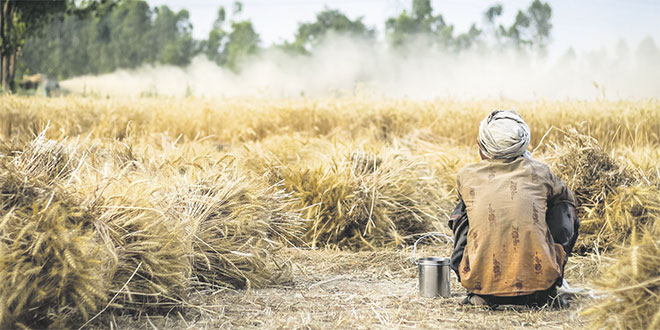It is official: the delay in rainfall and their scarcity have had a strong impact on the 2021/2022 grain season. The final production of the main cereals for this season is about 34 million quintals, i.e. a drop of 67% compared to the previous crop year which recorded an exceptional performance of 103.2 million quintals, explains the ministry of Agriculture.

Its press release published on Monday August 8th draws up an inventory per region and per month. Thus, the very low rainfall, or even its absence in several regions of the Kingdom during the months of January and February, caused a delay in the growth of cereals and a more or less significant drop in yields depending on the region. Cereals in favorable areas fared relatively better following the rainfall of the last dekad of February, March, and early April.
The cereal area sown for this season is 3.6 million hectares versus 4.35 million hectares during the previous season. By species, cereal production is as follows: 18.9 million quintals of soft wheat, 8.1 million quintals of durum wheat, and 7.0 million quintals of barley.
Nearly 58% of production comes from the favorable regions of Fez-Meknes and Rabat-Salé-Kenitra. Irrigated cereals contributed only 20.7% of the total production. “This is due to the decline in the irrigated area of cereals and irrigation restrictions in the large hydraulics perimeters”, say the officials.
As a reminder, the 2021/2022 agricultural season experienced rainfall which at the end of May 2022 reached 199 mm, down 44% compared to the 30-year average (355 mm) and a drop of 34% compared to the previous season (303 mm) on the same date.
This crop year was also characterized by a poor temporal distribution of rainfall, with nearly a third of the rainfall occurring during the months of November and December and 53% of the cumulative rainfall occurring in the months of March and April.
Overall, the forecast value added should register a drop of 14%. It would result in a drop in growth points of 1.8. Several factors would contribute to this, taking into account the final production of cereals, the performance of arboriculture, market gardening, and spring crops, as well as the positive effects of the program aiming at mitigating the effects and the impact of the rainfall deficit, in particular on livestock breeding.
In anticipation of the next 2022-2023 crop year, the line ministry is planning a series of measures, including subsidies, storage payments, supply of fertilizers, selected seeds, and other measures.
Fatim Zahra TOHRY


























